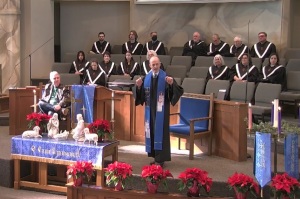The Ben Hinnom Valley
The name Ben Hinnom most probably means Son of Hinnom, Hinnom being the owner of the land, but the valley's name in Hebrew, Gei Ben Hinnom, resembles the Hebrew word for Hell, Geihenom, and despite its peaceful and innocent appearance, its history makes the name well deserved.
Right below Mt. Zion, outside the walls of the Old City of Jerusalem, lay a deep valley, green and wide, that separates the old city of Jerusalem from the modern neighborhoods of the city. In fact, the valley, known as the Ben Hinnom valley or Gei Ben Hinnom in Hebrew, separates the Old City from the first Jewish neighborhood built outside the Old City walls, Mishkenot Sha'ananim (established 1860).
The name Ben Hinnom most probably means Son of Hinnom, Hinnom being the owner of the land, but the valley's name in Hebrew, Gei Ben Hinnom, resembles the Hebrew word for Hell, Geihenom, and despite its peaceful and innocent appearance, its history makes the name well deserved.
It was here, in the Ben Hinnom Valley, that people in ancient times used to sacrifice their first born children to the foreign gods, the Molech and the Baal. The Israelites that a few hundred years back had adopted the Mosaic faith upon receiving the Torah, emulated their gentile neighbors and adopted this custom as well.
It is told of King Ahaz of the Kingdom of Judea in relation to the Ben Hinnom Valley: "Ahaz was twenty years old when he began to reign... and he did not that which was right in the eyes of the Lord, like David his father; but he...made also molten images for the Baal. Moreover he offered in the valley of Ben Hinnom, and burnt his children in the fire, according to the abominations of the heathen, whom the Lord cast out before the children of Israel"( II chronicles, 28:1-3).
King Ahaz was not the only Israelite to follow this custom. This custom was quite prevalent on those days. Actually, it was so common, that the prophet Jeremiah preached the Israelites and warned them against it: "(they) have filled this place with the blood of innocents and have built the high places of Baal, to burn their sons in the fire for burnt-offerings unto Baal; which I commanded not, nor spoke it, neither came it into My mind. Therefore, behold, the days come, saith the Lord, that this place shall no more be called... the valley of Ben Hinnom, but the valley of slaughter; and I will make void the counsel of Judah and Jerusalem in this place; and I will cause them to fall by the sword before their enemies... (Jeremiah 19: 5-7);
Jeremiah's prophecy manifested itself later on in history, when Jerusalem was captured and the Holy Temple destroyed by the Babylonians and once again by the Romans a few hundred years later.
The deepest part of the valley is called the Sultan's Pool, named after Ottoman ruler (Sultan) Suleiman the Magnificent (1494-1566) who made it usable. There is a bridge leading to the pool that used to serve as a dam. Today the place is mostly dry and serves as a scene for festive summer concerts that attract multitudes of people. Visitors can also enjoy the Artists Quarters adjacent to it (Hutzot Ha-yotzer), hosting different art galleries of local artists.
The Sultan's pool in the Ben Hinnom valley is also known as Batsheba's Pool. This name is an informal name derived from a common mistake. The Tower of David inside the walls of the Old City is towering just above the valley and the pool. The tower was built in the Ottoman Era, but people mistakenly thought that the Tower of David really was a tower from King David's time, and figured that it must have been from there that he saw Batsheba bathing in the near by pool. Hence the mistake that led to the name.
The valley itself is a part of the graveyard surrounding the walls of the Old City of Jerusalem. It is a Jewish practice not to build graves and graveyards inside the city walls, therefore the area outside the walls used to be a burial area during all the different eras of history since Jerusalem became a Jewish city (over 3000 years ago). One can see there graves from different times and eras in the city's history dating back to the Second Temple era and before that as well.
All in all, when walking through the Ben Hinnom Valley, one can hardly suspect the bloody history of the place, but once one knows of that history, it's impossible not to feel an eerie feeling around the place. That same feeling crawls into one's heart even when praying in the beautiful synagogue at the Yemin Moshe neighborhood right above the valley.
That said, one can learn a lot of the different historical levels of the city of Jerusalem by taking a stroll through this beautiful valley of hell, Gei Ben-Hinnom.




























